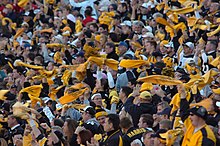
The Minnesota Twins are an American professional baseball team based in Minneapolis. The Twins compete in Major League Baseball (MLB) as a member club of the American League (AL) Central Division. The team is named after the Twin Cities moniker for the two adjacent cities of Minneapolis and Saint Paul.
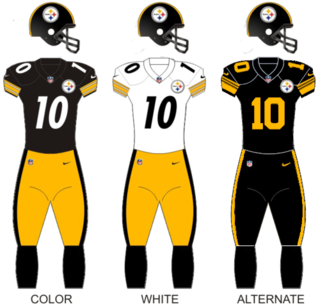
The Pittsburgh Steelers are a professional American football team based in Pittsburgh. The Steelers compete in the National Football League (NFL) as a member club of the American Football Conference (AFC) North Division. Founded in 1933, the Steelers are the seventh-oldest franchise in the NFL, and the oldest franchise in the AFC.
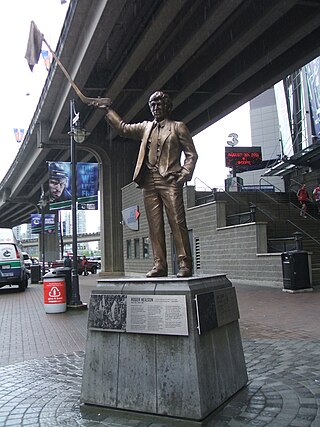
Roger Paul Neilson, was a Canadian professional ice hockey coach, most notably in the NHL, where he served with eight teams. Known as Captain Video because of his technological contributions to the game, he is a member of the Hockey Hall of Fame in the builder category. Alongside his decorated coaching abilities, Neilson is commonly remembered today for his many antics which resulted in the creation of several NHL rules.
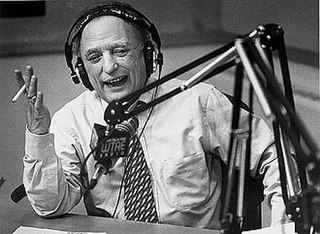
Myron Sidney Kopelman, known professionally as Myron Cope, was an American sports journalist, radio personality, and sportscaster. He is best known for being "the voice of the Pittsburgh Steelers".

The Official Star Tribune Homer Hanky is a handkerchief-like rally towel printed for the Minnesota Twins. It was first introduced during the 1987 pennant race by the Minneapolis Star Tribune as a promotional item when the Twins won the American League Western division. Homer Hankies have been reprinted with different designs over the years to commemorate various occasions, including division titles, the inaugural opening day at Target Field, and the 2014 All Star Game. The Homer Hanky has been manufactured by several companies over the years, including Bensussen, Deutsch & Associates LLC and Winona, Minnesota based company, WinCraft Inc.
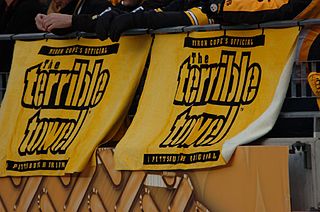
The Terrible Towel is a rally towel associated with the Pittsburgh Steelers, an American football team in the National Football League (NFL). The Terrible Towel has spread in popularity; for example, fans take their Towel to famous sites while on vacation. The Towel has been taken to the peak of Mount Everest, and even into space on the International Space Station. It is widely recognized as a symbol of the Steelers and the city of Pittsburgh.

Edgar Allen Diddle was an American college men's basketball coach. He is known for coaching at Western Kentucky University in Bowling Green, Kentucky from 1922 to 1964. Diddle became the first coach in history to coach 1,000 games at one school. Diddle was known as one of the early pioneers of the fast break and for waving a red towel around along the sidelines. During games he would wave, toss, and chew on this towel, and even cover his face in times of disappointment. His red towel is now part of WKU's official athletic logo. Diddle experienced only five losing seasons in 42 years.

Steeler Nation is an official name for the fan base of the National Football League's Pittsburgh Steelers. The term was coined by NFL Films narrator John Facenda in the team's 1978 highlights film. Steelers Country is often used for the Pittsburgh, Pennsylvania, area where the fan base originates or for areas with a large Steelers fan base.
In Pittsburgh sports lore history, many extraordinary events have contributed to the city's sports franchises winning — and almost winning — titles. Other events in the city's sports history have been iconic for other reasons.

Towel Power is a term used by the Vancouver Canucks of the National Hockey League (NHL) to describe the waving of rally towels by their fans. The tradition started in the 1982 Campbell Conference Finals when Vancouver played the Chicago Blackhawks. During game two of the series, head coach Roger Neilson waved a white towel on the end of a hockey stick in a mock surrender after being upset with the officiating. Neilson was ejected and the Canucks lost 4–1. When Vancouver returned home from Chicago for the following game fans supported both Neilson and the Canucks by waving towels first at the airport when the team arrived and then during the next game. The Canucks won the next three games and advanced to the Stanley Cup Finals where they were defeated by the New York Islanders. As part of the tradition, the Canucks hand out towels prior to playoff games for fans to help support the team.
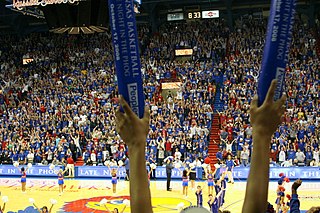
Thundersticks, sometimes known as bambams, are long, narrow plastic balloons that are used as promotional noise makers. The noise is created when two thundersticks are struck together. They are most often used at sporting events.
The Green Weenie was a sports gimmick in Pittsburgh, Pennsylvania, co-created by Bob Prince (1916–1985), the broadcaster for the Pittsburgh Pirates Major League Baseball team, and Pirate trainer Danny Whelan. It was most popular during the 1966 season. The Green Weenie was manufactured by Tri-State Plastics, a Pittsburgh plastic thermoforming company between 1967 and 1974 and during the 1989 season.
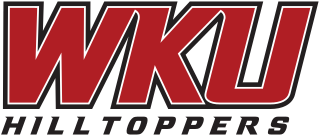
The Western Kentucky Hilltoppers football program is a college football team that represents Western Kentucky University. The team competes at the NCAA Division I Football Bowl Subdivision level and represents the university as a member of Conference USA in the Eastern division. The 2002 team was the FCS national champion. The program has 13 conference championships and 7 FBS-level bowl game victories. The Hilltoppers play their home games at Houchens Industries–L. T. Smith Stadium in Bowling Green, Kentucky and the team's head football coach is Tyson Helton.

The Western Kentucky Hilltoppers men's basketball team is the men's basketball team that represents Western Kentucky University (WKU) in Bowling Green, Kentucky. The Hilltoppers currently compete in Conference USA. The team's most recent appearance in the NCAA Division I men's basketball tournament was in 2024. Hank Plona was announced as the team's current head coach on April 2, 2024.
John Oldham was an American college and professional basketball player, college basketball coach and athletic director. Oldham interrupted his studies at Western Kentucky University (WKU) to serve in the US Navy during World War II. He was on the university's basketball team and after graduation in 1949 played for the Fort Wayne Pistons. Oldham went into coaching in 1952 at College High School in Bowling Green, Kentucky. In 1955 he became coach of the Tennessee Tech Golden Eagles men's basketball and led the team to three conference championships. He returned to WKU in 1964 to coach the Western Kentucky Hilltoppers basketball team, leading them to four NCAA tournaments, one NIT, and winning four Ohio Valley Conference (OVC) championships. In 1971 Oldham was promoted to athletic director at WKU, a position he held until 1986. During his tenure the university won six OVC and one Sun Belt Conference All-Sports Championship. After retirement he was elected to the Bowling Green City Commission.
Throughout its history, Major League Baseball rivalries have occurred between many teams and cities. Rivalries have arisen for many different reasons, the primary ones including geographic proximity, familiarity with opponents, various incidents, and cultural, linguistic, or national pride.

The Steelers–Titans rivalry is a National Football League (NFL) rivalry between the Pittsburgh Steelers and the Tennessee Titans that dates back to the 1970s when the Steelers and then-Houston Oilers played in the AFC Central. The two teams were realigned into separate divisions for the 2002 NFL season, however, matchups are still considered heated between the two teams.

Zoltan is a hand gesture in which a person has their hands stacked on top of each other in order to form a letter "Z". Originally used in the 2000 stoner film Dude, Where's My Car?, the Zoltan hand gesture also became popular in 2012 with members of the Pittsburgh Pirates, as well as residents of Pittsburgh rallying around the team.

The 1935–36 Western Kentucky State Teachers Hilltoppers men's basketball team represented Western Kentucky State Normal School and Teachers College during the 1935-36 NCAA basketball season. The team was led by future Naismith Memorial Basketball Hall of Fame coach Edgar Diddle and leading scorer Brad Mutchler. The Hilltoppers won the Kentucky Intercollegiate Athletic Conference, led NCAA in wins for the 3rd consecutive year, and received an invitation to the National Olympic Playoff representing the South. Mutchler, Max Reed, Elmo Meacham, and William “Red” McCrocklin were selected to the All-SIAA team. Mutchler, Reed, and Meacham were also named to the All-State team.

The 1955–56 Western Kentucky State Hilltoppers men's basketball team represented Western Kentucky State College during the 1955-56 NCAA University Division Basketball season. The Hilltoppers were led by future Naismith Memorial Basketball Hall of Fame coach Edgar Diddle and leading scorer Forest Able. Western finished in a three-way tie for the Ohio Valley Conference championship. There was no conference tournament, so a playoff was held to determine which team would advance to the NCAA tournament, which was won by Morehead Sate.

